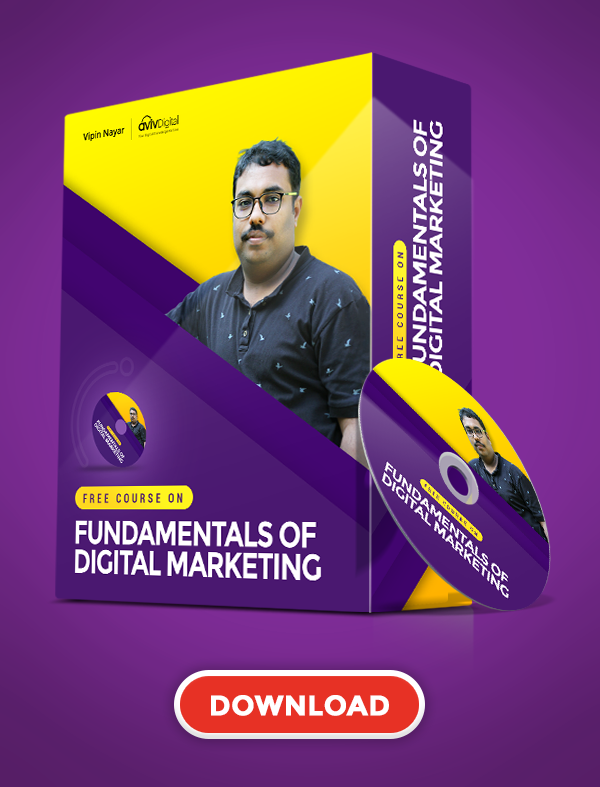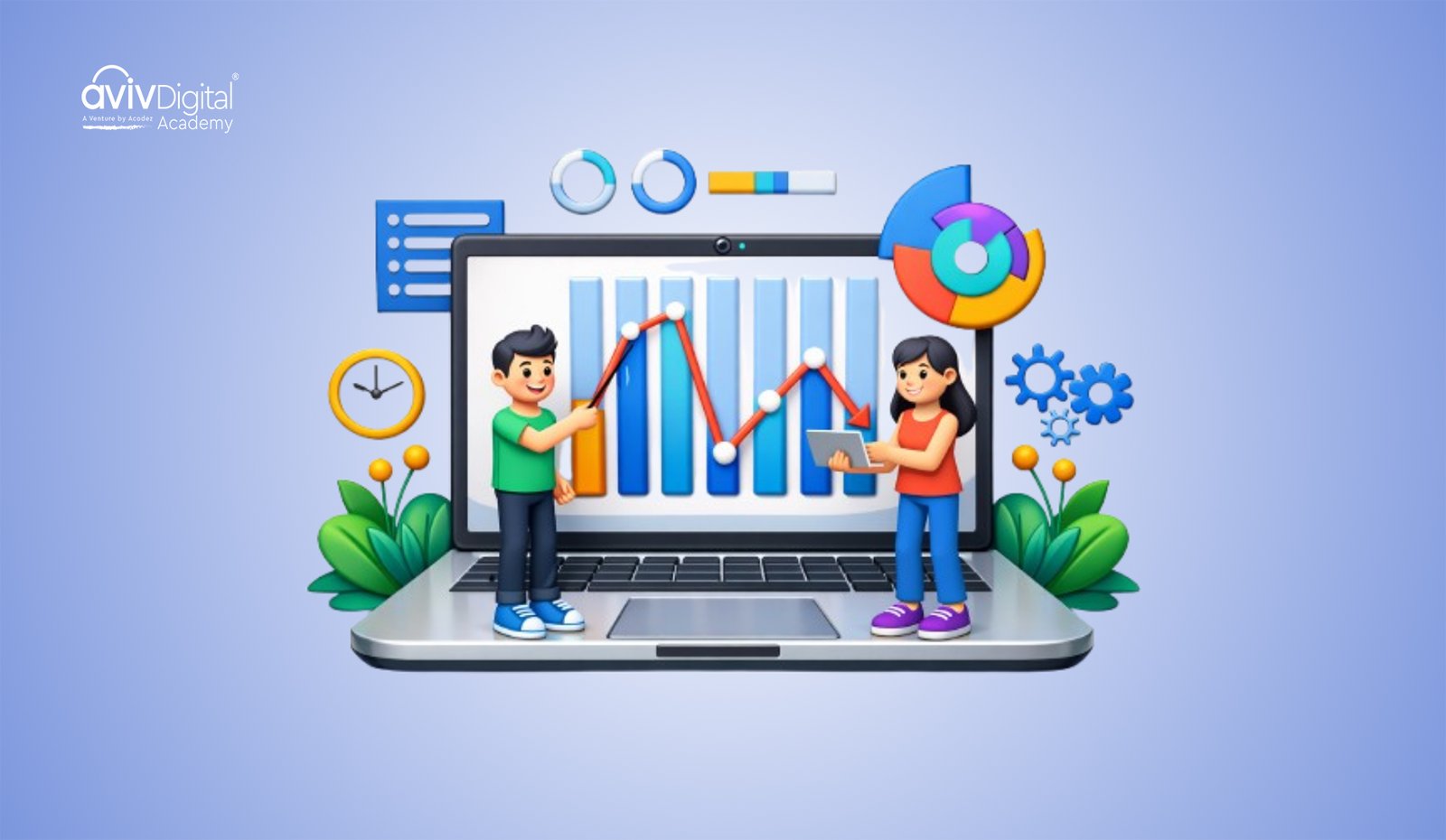
SEO is a crucial step in Digital Marketing, and it is also an in-demand skill. There are numerous approaches, types and techniques of SEO to maximise the benefits of online marketing. White Hat SEO and Black Hat SEO are a few examples. Pragmatic SEO is such an SEO tactic that we will explore today in detail. Programmatic SEO is a way to scale SEO content automatically. Instead of manually writing one landing page at a time, you use templates and data to generate hundreds or thousands of pages targeting different keywords or locations. In practice, programmatic pages often look like directory or listing pages. In simple terms, programmatic SEO means using automation to publish large volumes of keyword-specific pages. In this post, we’ll explain what programmatic SEO is, how Programmatic SEO works, why and when to use it, who benefits from it, and the key dos and don’ts. We’ll also highlight best practices so you can see why this strategy often pays off and what pitfalls to avoid.
What Is Programmatic SEO?
Programmatic SEO (sometimes called pSEO) is automated content generation for search. It’s not a tool, but a strategy: you set up systems to create many search-optimised pages at once, instead of writing each page individually. The key idea is to use templates + data. You decide on a page layout (template) and identify variable elements (like city names, product details, prices). Then you feed the template with data from spreadsheets, databases, or APIs. For example, if you run a travel site, you might have a template for “things to do in [Kochi]” pages, and a database of cities and attractions. Programmatic SEO tools will automatically generate one page for each city by inserting the city’s name, images, and attraction info into the template. Programmatic SEO is different from traditional SEO because it focuses on scale. Traditional SEO often means writing in-depth content for high-volume keywords (like an article on marketing best practices). Programmatic SEO, by contrast, targets many long-tail or specific keywords by generating lots of narrower pages. It’s also data-driven: the content comes from existing data rather than being written from scratch.
How Programmatic SEO Works
Programmatic SEO follows a clear process. Since you understood what is Programmatic SEO, let’s explore how it works. Here’s the typical workflow:
- Identify Keyword Patterns: First, find the themes or “head terms” in your niche (like “hotels”, “restaurants”, “shoe store”). Then think of modifiers (locations, product types, attributes). For example, if your business is a restaurant directory, head terms might be “restaurants” and modifiers could be “in kochi”, “near me”, or “for vegans”. Combine head terms and modifiers to generate many long-tail keyword phrases (e.g. “vegan restaurants in Kochi”).
- Gather Data: Then, the data or information is gathered to populate each page. These include listings of businesses, product details, location info or any structured data that is required for your business’s keywords. Sources used in this scenario include web scraping, third-party API’s or internal databases. To explain with an example, a real estate business might use a popular address and the best prices, while a travel agency uses a city and its attractions.
- Build a Database or Spreadsheet: The data and page elements are stored in a structured format. Ideally, create a table in Google Sheets or a SQL database setting column for each variable, such as page title, URL, meta description, H1 heading and body content, with each row comprising the final page. To understand with an example, a city page should include the name of the city like Kochi, description, local language and so on. This is the content database.
- Design Page Templates: Create a template or layout that all the generated pages will use. This includes the HTML structure and SEO fields. Each template should have placeholders for your variables (e.g. [City], [Restaurant List], [Price Chart]). A proper and quality design ensures an enhanced user experience. For instance, all your “hotel in Kochi” pages might use the same header layout and photo banner, inserting the city name and hotel data dynamically.
- Automate Page Generation: With the help of a tool or script, merge the data using the template from numerous approaches you can use, from as a WordPress Plugin like WP All Import for importing a spreadsheet and auto-create posts. You can also use a static site generator like Jekyll or Hugo fed by a database. Platforms such as Shopify or Webflow come with built-in API’s or templating. To refer to the database and generate a webpage file automatically instead of doing manually by hand.
- Optimize & Launch: Despite the fact that pages are autogenerated, ensure it should still checked by a human for important SEO elements. The title tag, meta description must be verified to be unique with proper H1 relevant headings and overall quality. Schema Markup, structured data must be included and must be made easy to crawl using proper link structure and quick loading. Finally, allow search engines to find by linking from the main site, XML sitemaps and integrating them to navigate the site.
- Monitor & Update. After launch, keep an eye on analytics and Search Console. Check that pages are being indexed, get the traffic expected, and actually answer user queries. Update any data that can change (like prices or rates) and fix any issues. Continuous monitoring is crucial because programmatic content can go stale quickly if not maintained.
In simple terms, programmatic SEO works by combining automated keyword research with data-driven page templates. Once the system is set up, it’s much faster to publish and maintain niche landing pages at scale than to write them one by one.
Why Use Programmatic SEO – Benefits and When It Shines
When should you consider programmatic SEO? The answer: when you have a lot of similar content to cover or want to target many niche keywords efficiently. Here are the main reasons and scenarios where it’s useful:
- Scale & Visibility: Programmatic SEO can dramatically increase your site’s footprint in search results. By generating hundreds or thousands of pages, you capture many long-tail queries that would be impractical to target manually. For example, a currency converter site might create a separate page for every currency pair (“USD to EUR”, “USD to INR”, etc.).
- Targeted Keyword Reach: Programmatic pages are usually very specific. This is great for capturing transactional or informational intent at a micro level. Instead of ranking for one broad term, you rank for dozens of precise variants.
- Efficiency & Cost-Effectiveness: Once your setup (data + templates) is ready, adding more pages is quick and cheap. You’re not hiring a writer for each page; you’re often doing it in bulk with software. This saves time and money. Over time, programmatic SEO can offer high ROI: initial development effort pays off by driving consistent traffic with minimal updates. As the Refresh Digital guide notes, the initial tech investment often leads to “long-term savings” since automation reduces manual labour.
- Competitive Advantage: Few companies do programmatic SEO well, especially in smaller niches or emerging markets. If you are an early adopter in your field, you can outrank competitors by simply having pages they don’t. As one source puts it, programmatic SEO “isn’t widely used,” so you can “gain a big advantage if you’re the first” to implement it.
- Consistent User Experience: Because all pages use the same professional template, the site feels coherent and trustworthy. Users get a uniform experience (similar navigation, style) even as content changes. This can actually improve engagement versus a mishmash of page designs. And for businesses like directories or e-commerce, it makes sense: each product or location page follows a known format, setting clear expectations for visitors.
- Data-Driven Insights: Having a systematic pSEO setup allows you to experiment and learn. You can test which keywords convert best, update data fields to see what engagement improves, and use analytics to refine templates. The Refresh Digital blog highlights that programmatic SEO is data-driven; it lets you continuously optimize content based on search trends. You can even adapt pages automatically as data changes (like updating a product price or adding a new restaurant).
In summary, programmatic SEO is especially useful when you have:
- A large catalogue (products, locations, services, etc.)
- Lots of long-tail keywords or combinations to target
- Data sources (databases, APIs) are ready to feed into the pages
- The ability to invest in a one-time setup for ongoing traffic gains
It’s less useful for very small sites or a handful of keywords. If you only need a few pages, manual content may suffice. But for growing businesses, startups with big data sets, agencies serving multiple clients, and large enterprises
Who Can Benefit
Programmatic SEO benefits many types of businesses and websites, particularly those with scale or variety. Key examples include:
- E‑commerce and Retailers
- Travel & Local Services
- Real Estate & Classifieds
- Financial & Tech (Data-Driven Content)
- Content & Marketing Agencies
Key Benefits of Programmatic SEO
Putting it all together, here are the major benefits of programmatic SEO that often motivate marketers to choose programmatic SEO:
- Massive Scalability:. Generate numerous pages from one template. This increases organic traffic on a much larger scale than manual SEO.
- Greater Visibility on Long-Tail Keywords: Each page targets a specific query, driving traffic that generic pages miss. More pages mean more entry points from search engines.
- Efficiency and Speed: After the initial setup, new pages pop out quickly. This saves time compared to writing each page. Tools and scripts handle the heavy tasks.
- Lower Ongoing Costs:. Once templates and data feeds are built, you don’t need as many copywriters or editors for each page. Content updates can be automated in simple terms.
- Consistent Quality & Branding: Using the same structure ensures each page meets design and SEO standards. It’s more comfortable to implement brand voice and technical SEO across many pages.
- Competitive Edge: It’s still relatively odd, so early adopters can dominate niche searches. Your site can “own” keyword spaces that competitors haven’t even tried.
- Data-Driven Content: Allows you to leverage insights and data trends to customize page content. You can tailor pages precisely to user’s intent if you analyze the data accurately.
- Improved User Experience for Large Catalogues: A user looking for a “vegan restaurant in [City]” lands on a page tailored for that city and query, more relevant than a generic site homepage. This can lead to higher engagement and conversions.
These advantages make programmatic SEO a powerful addition to a marketer’s expertise. It turns what used to be a time-consuming SEO process into a mechanical method that scales exponentially.
Best Practices and Tips
To succeed with pSEO, follow these best practices for programmatic SEO:
- Keyword & Intent Alignment: Don’t just generate pages for random keyword combos. Carefully research which long-tail queries are actually worth targeting. Make sure each generated keyword aligns with the user’s intent.
- Quality over Quantity: Even though it’s tempting to create numerous pages at once, focus on the outcome of each page. Google can penalise “thin” or low-value content. Confirm each page has enough unique, relevant content or data to satisfy the user’s query..
- Unique Titles and Meta Descriptions: Programmatically insert the keyword and variable into the title tag and meta description, make each page distinctive. For example, “Digital Marketing Course in Kochi [Website Name: AvivDigital.in ]”.
- Template Flexibility: Design your templates with variation. Some sections should change per page (like the [City] name, price ranges, item list), but also allow for some free-text or images.
- Internal Linking: Create a logical site structure. Link your programmatic pages from relevant hub pages or categories, so search engines and users can find them. Also, link similar pages if it makes sense.
- Sitemaps and Indexing: Utilize an XML sitemap (or multiple sitemaps in case needed) to list all your new pages. Submit them to Google Search Console. This assists search engines in discovering and indexing your pages. For very large numbers of pages, auto-generate sitemaps and keep them updated as your database changes
- Structured Data (Schema Markup): Whenever applicable, add schema. For example, employ LocalBusiness schema on location pages, Product on product pages, or Offer for prices. Structured data helps Google understand and feature your content.
- Monitor Performance: Track the rankings, traffic, and user engagement (bounce rate, time on page) for your new pages. If some patterns of pages underperform, adjust the template or keywords.
- Use the Right Tools: There are many ways to automate page creation. On WordPress, plugins like WP All Import can take CSV/Excel sheets and create posts. Static site generators (Jekyll, Hugo) or Webflow’s CMS can also pull from spreadsheets.
- Validate Data Accuracy: Make sure the provided data is updated and legitimate. Inaccurate data can mislead users and hurt your credibility. Automate data updates if possible.
- Limit and Noindex If Needed: If some categories of pages aren’t valuable enough, don’t index them. For example, if you generate pages for rarely searched locations that have almost zero traffic, you might set them to “noindex” in robots meta or exclude from sitemap.
Drawbacks or Disadvantages of Programmatic SEO
Programmatic SEO is powerful, but it’s not without pitfalls. Marketers should be aware of the challenges or its disadvantages:
- Quality vs. Spam Risk: The biggest danger is creating lots of low-value pages. Google’s guidelines explicitly warn against “doorway pages”, meaning pages that are made only for search engines but not for users. If the pages which implement programmatic SEO seem similar and offer very few unique content, Google has the right to penalize. Therefore, ensuring each page is essential to avoid the risk of de-ranking or flagging of duplicate content.
- Indexing Issues: Search engines may not index every auto-generated page, especially if they seem to be duplicates. Due to this, some pages might never appear in search results. This reduces your expected ROI. To tackle the issue, use Proper canonical tags and internal linking, but it’s a known limitation.
- Complicated technicals: Setting up programmatic SEO requires technical knowledge as that of a developer. You need to handle databases, write import scripts or configure plugins, and manage potential issues like URL conflicts and broken links. It’s more complex than writing a few blog posts. If your team lacks these skills, invest time or partner with experts to see the results.
- Challenging Maintenance: Once thousands of pages exist, any change is a bigger effort. For example, if you rebrand and change page structure, you must update all templates and rerun the import. If your data source changes format, it can break the whole system. There’s also the risk of outdated or “parked” pages if not regularly reviewed. Plan for periodic audits to catch 404s, stale info, or indexing errors.
- Initial Investment for resources: To build the initial system, it takes a huge effort for planning keywords, gathering data, coding and designing templates, making it harder for small or growing businesses to tackle their expenditure. Though it’s a strategic and result-driven method that takes time, it requires a huge commitment.
- Page Performance: A large number of pages can slow down your site if not managed well. A huge database and hundreds of new pages could impact server load or indexing capacity. Ensure your hosting and CMS can handle the scale, and that you optimize images and code for speed. Google’s Core Web Vitals apply to all pages, programmatic or not, so don’t neglect performance.
- Content Cannibalization:. If not careful, programmatic pages might compete with your other content. For example, a city-specific product page could rival a general product page. Use internal linking and noindex tags strategically to avoid cannibalizing your own rankings.
Finally, Programmatic SEO isn’t magic, it’s automation. By systematically generating many tailored pages, businesses can tap into expansive search demand. The strategy works particularly well for websites with large catalogues, multiple locations, or data-driven content. It also requires huge capital along with commitment, yet quality and strategy offer results. Use robust data, design proper templates, and always focus on real user value. Keep pages updated, monitor performance, and guard against duplicate/low-quality content. Programmatic SEO can be a game-changer for online visibility if done right. It offers marketers and SEO professionals a way to scale their efforts beyond their usual manual content.
Aviv Digital is one of the leading digital marketing institutes in Kerala. We provide Digital marketing course in Calicut and Digital marketing course in Kochi. Our globally recognized certification programs include advanced SEO training, SEM, SMM, Email Marketing, and Inbound Marketing courses. We also provide detailed online classes for digital marketing courses. For more details regarding course schedule and workshops, contact us through a quote or call us right away at +91 81569 98844







